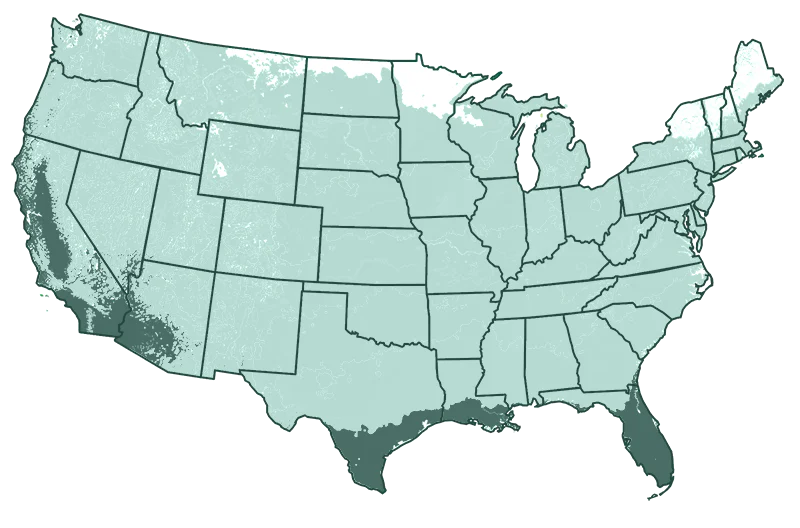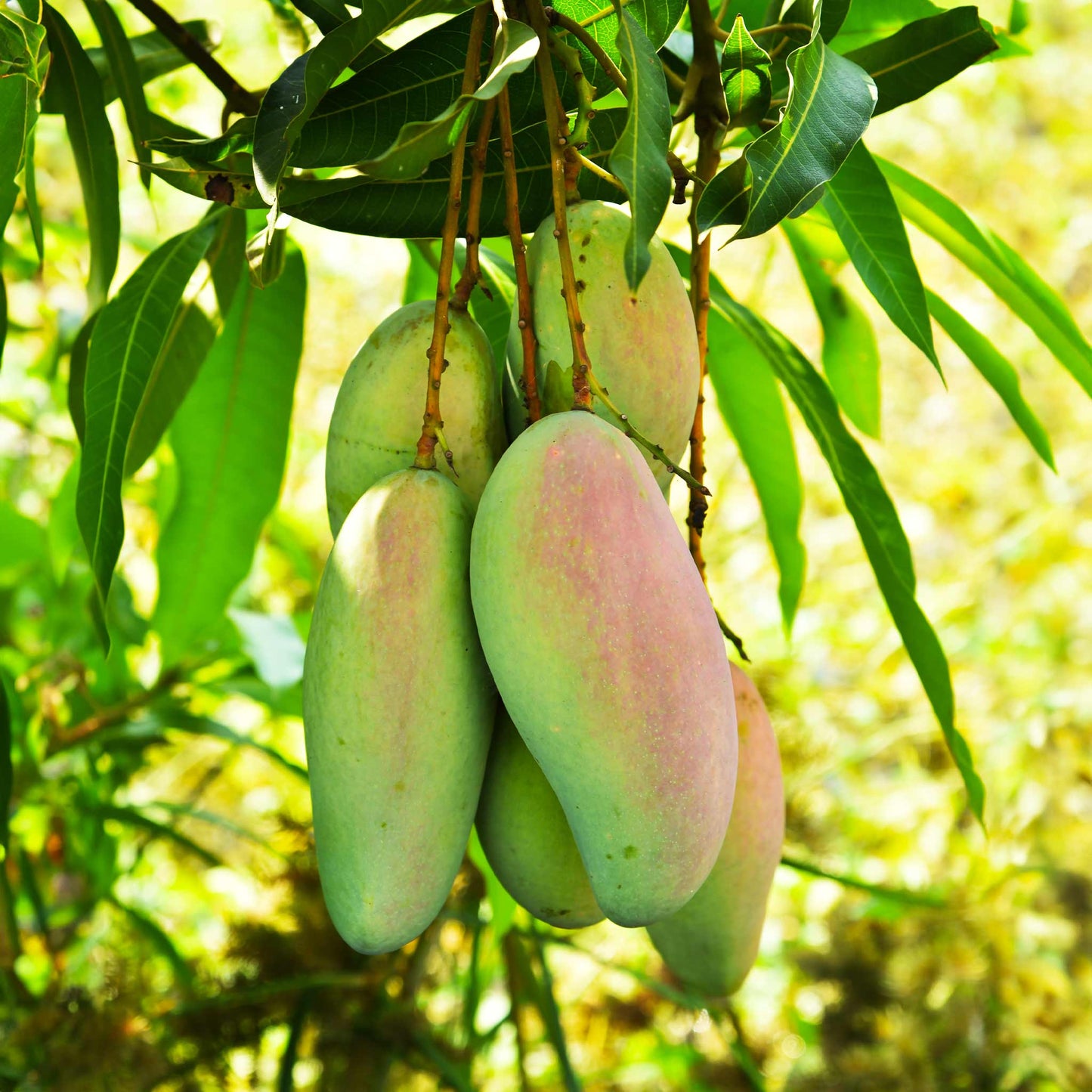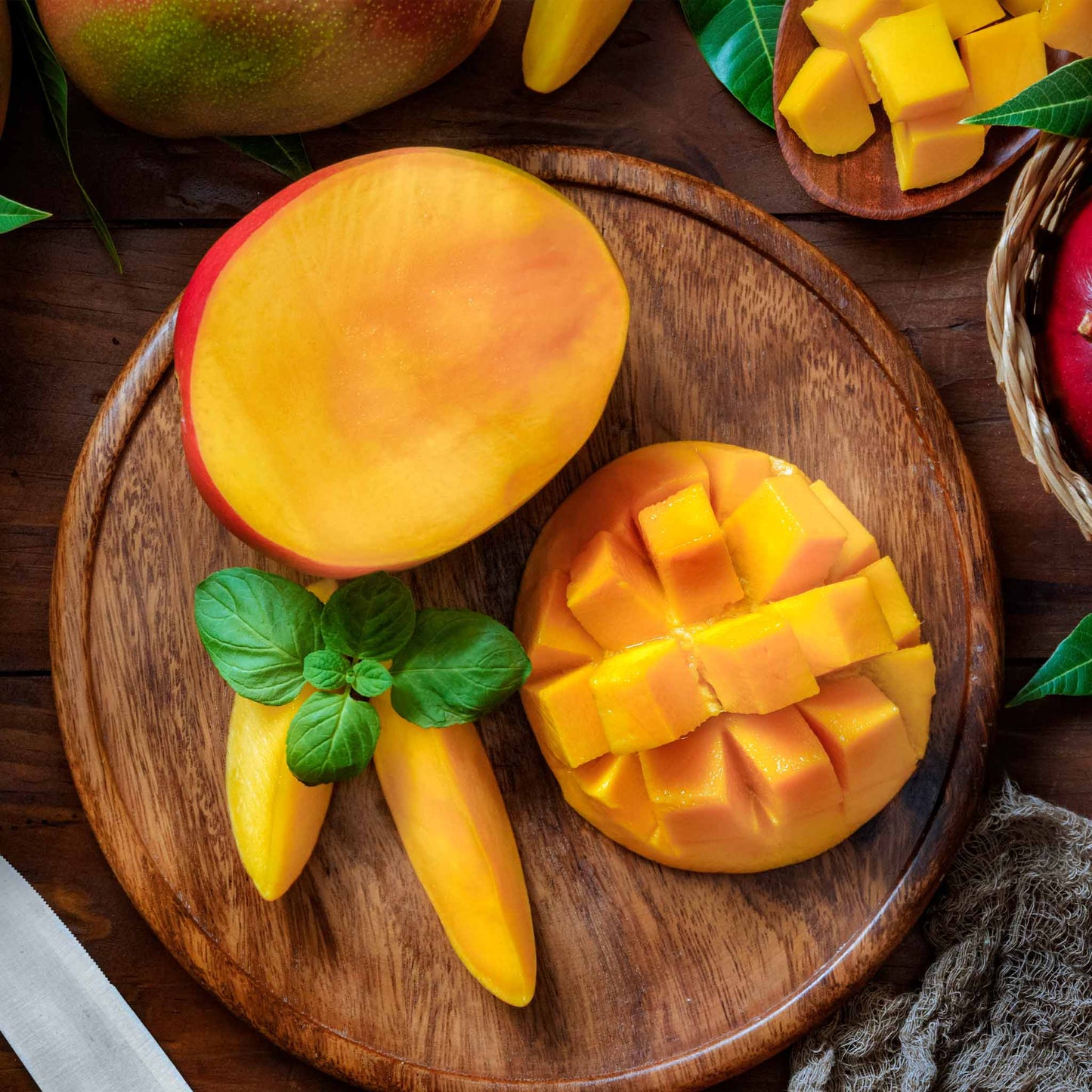You are in GrowingZone 6
Glenn Mango Tree
View More Planting Info
Find a position in full sun with 10 feet of space between other plants or structures. Dig a hole three times the size of the container and the same depth. Adjust the soil by adding a bag of acidic planting mix to the topsoil and blending it in. The soil should be loose and sandy. Remove the tree from the bag and gently tease the roots open. Add the plant to the hole and backfill, pressing out any air pockets in the soil. Make a basin around the tree to direct the water to the roots and finish off with a layer of mulch to conserve water and reduce weeds. Leave a gap between the tree trunk and the mulch to prevent trunk rot, and water it in well. When planting in containers, choose a pot two sizes bigger than the pot it comes in and ensure it has plenty of drainage holes. Place pots in a position that gets at least 8 hours of sunlight a day.
Harvesting:
Harvest in summer when fruit turns to yellow and orange. Allow it to ripen a few days off the tree.
Pruning:
Prune for size and to improve airflow into the center canopy. Remove damaged or diseased branches.
Growth:
Glenn Mango reaches up to 20 feet tall. Space at least 10 feet from other plants.
- Product Info
- Care and Maintenance
- Planting Care
- Growing Zone
Product Info
Mature Height: 15-20 ft.
Mature Width: 8-10 ft.
Sunlight: Full-Part Sun
Growth Rate: Fast
Does Not Ship To: AZ, OR
Care and Maintenance
Watering: When first planting a Glenn Mango, water every day for two weeks. For the next six weeks, water two to three times a week. Once that is finished, water only when the soil is dry to a depth of two inches. Don’t overwater, which could stress out the plants.
Fertilizing: Do not use chemical fertilizers on mango trees. The high ammonium nitrates will burn them. Instead, use an organic fertilizer with beneficial bacteria like mycorrhizal fungi added, or use a fish-emulsion blend. Feed trees early in the spring with a balanced fertilizer to promote leaf development, and later with a low nitrogen and high potassium fertilizer two to three times from May to October.
Pruning: Prune right after harvesting (or just before they start flowering in cooler regions) in late winter or early spring. Fruit forms at the end of branches, so the idea is to encourage more branches to produce more fruit. Prune any crossing or damaged branches. Trim branches to allow light into the canopy to produce more fruit and avoid potential diseases.
Pests and Diseases: Inspect your tree regularly for possible pests and diseases. This mango is relatively pest- and disease-free. However, look out for the main mango diseases like anthracnose, black spot, and powdery mildew, and treat as necessary.
Pollination: Glenn mangoes are self-fertile. Planting more than one Glenn mango will increase the abundance of fruit on the trees. The main pollinators for mangoes are fruit bats, bees, butterflies, and other insects.
Harvesting: Harvest in summer when the fruit is large, slightly firm, and turning from green to yellow and orange. A green mango will still ripen for a few days after picking. Pull the fruit off the tree, and the stem should come away easily.
Recovery Time: Transitioning from our nursery to your home can be a bit of a shock to your plant. A short acclimation period helps it recover and reduces stress.
Climate Adjustment: Every environment is unique. Giving your plant time to adjust to the local climate, humidity, and light conditions in a shady spot will set it up for better growth and health.
How to Acclimate Your Plant: Keep the plant in its container and place it in a shady, sheltered area away from high winds. Ensure it's watered adequately – the soil should be moist but not waterlogged. Monitor the plant for any signs of distress and allow it to adjust for a few days before planting. After a few days of acclimation, your plant will be better prepared to thrive in its new home for years to come.
Planting Care
Sunlight: For the best fruit, provide at least 8 hours of sunlight per day.
Soil: Plant in well-draining soil with an acidic pH between 6.6 and 7.3. Improve the soil's acidity by adding a commercial acid soil mix. They prefer loose, sandy soil.
Mature size: This tree will mature to 20 feet in ideal conditions, but it is more likely to be around 15 feet. The spread is between 8 and 10 feet.
Climate: Although this tree is cultivated in warmer Florida, it can be grown throughout most of the country. In colder regions, it should be planted in containers that can be moved indoors. It will tolerate temperature drops to 30°F (-1°C). Serious frosts and freezes can cause plant damage.
Thinning: Prune branches to manage their size and improve airflow into the center of the canopy. Remove damaged or diseased branches and trim the plant to improve growth.
Location: Plant in full sun in a position that receives at least 8 hours daily.
Watering: As a general rule, mangoes are not thirsty plants, but they benefit from more water during the fruit-set and fruit development stages. Test the soil to ensure it's dry to two inches below the surface before watering again when not fruiting. Avoid overwatering
Pruning: Prune to maintain the trees and allow light to penetrate the canopy. Pruning will also increase the branches that bear fruit. Prune away any diseased parts of the tree.
Spacing: Position at least 10 feet from other plants and buildings.
Harvesting: Harvest in summer when the fruit ripens, turning from green to yellow and orange. It will further ripen a few days off the tree.
Pollination: These trees are self-pollinating. Increase the natural pollinators like bees and butterflies by planting flowering spring annuals nearby.
Hardiness Zone: Plant outdoors in USDA Zones 9-11. In containers, they will grow well in Zones 4-11 with indoor winter protection.
Fertilizer: Do not use chemical fertilizers on mango trees. The high ammonium nitrates will burn them. Instead, use an organic fertilizer with beneficial bacteria like mycorrhizal fungi added, or use a fish-emulsion blend. Feed trees with a fertilizer with very low nitrogen and high potassium two to three times from May to October.
Growing Zone
Grows Well In Zones: 4-11 patio / 9-11 outdoors






